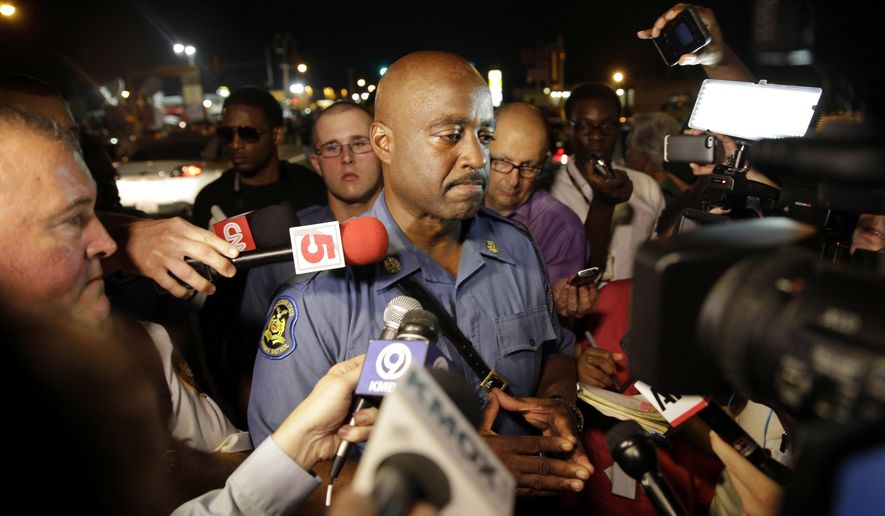OPINION:
Much of the media mantra in Ferguson, Missouri, followed a simple storyline. An 18-year-old black, known to his friends and family as a “gentle giant,” planned to attend college the following week. As he walked down the street with his friend around noon Saturday, Aug. 9, he met a police officer who gunned him down as he tried to surrender with his hands held high.
Many members of the media helped to create a frenzy and 10 days of rioting in the suburb of Ferguson by depending on tainted sources to manufacture this fairy tale.
The St. Louis County police started unraveling the media myth by releasing video of Michael Brown only minutes before he was killed. In that video, he robbed a convenience store of $48.99 worth of cigarillos and loomed over a clerk at the store — a much smaller man than Mr. Brown, who stood 6 feet 4 inches tall and weighed 292 pounds. The young man then forced the clerk backward before leaving with the stolen cigarillos.
The main source to describe the confrontation between Mr. Brown and Officer Darren Wilson, who shot and killed the black man, was Mr. Brown’s buddy who had been at the robbery. Dorian Johnson told reporters that his friend tried to surrender with hands held high and his back toward the police officer. Don’t journalists think he might have an agenda to protect himself and his friend?
Two autopsies reportedly showed Mr. Brown faced the policeman and probably did not have his hands held up as if to surrender. Moreover, the six bullet wounds — four in the arm and two in the head — were consistent with someone running toward the officer rather than away from him. The toxicology report found Mr. Brown had recently smoked marijuana.
The New York Times finally reported Wednesday that eyewitnesses “have given investigators sharply conflicting accounts.” That story came after the St. Louis Post-Dispatch tweeted Tuesday that at least a dozen sources had confirmed the police officer’s account that Mr. Brown, who had already broken one of the officer’s facial bones, started to run toward him.
SEE ALSO: HURT: Why everything went wrong in Ferguson
Eyewitness accounts often conflict with one another because people have different vantage points and different political agendas. That is why forensic evidence, such as the trajectory of the bullets, gunpowder residue and toxicology reports will play an important role in discerning what actually happened on that street in Ferguson.
But some young journalists apparently have appeared on the scene with little understanding of how to cover such events. One recent headline in The Washington Post read: “With no textbooks on how to cover riots, reporters in Ferguson are learning as they go.” Seriously? Then send out some old guys like me. I think I have a gas mask and a flak jacket in the basement.
Moreover, many journalists have failed to report on some key facts during the coverage of Ferguson.
For example, in the latest data available, the FBI found in 2012 that blacks committed 91 percent of the 2,648 murders of other blacks in the United States. In the same year, 410 people died in officer-related shootings, which are not broken down by race.
As Jason Riley of The Wall Street Journal put it: “Cops are not producing these black bodies in the morgues every weekend in Chicago, in New York and Detroit,” he said. “That’s not cops. Those [are] other black people shooting black people.”
The coverage of Ferguson has been far from the media’s finest moment, particularly when it comes to confirming facts about the case. That, in turn, has led unfortunately to more violence and the real possibility that the truth about what happened may never be fully known as politics trumps the facts.
SEE ALSO: Eric Holder hopes to have a ‘calming influence’ in racially charged Ferguson
• Christopher Harper teaches journalism at Temple University. He worked for more than 20 years at The Associated Press, Newsweek, ABC News and “20/20.” He can be contacted at charper@washingtontimes.com and on Twitter @charper51.




Please read our comment policy before commenting.